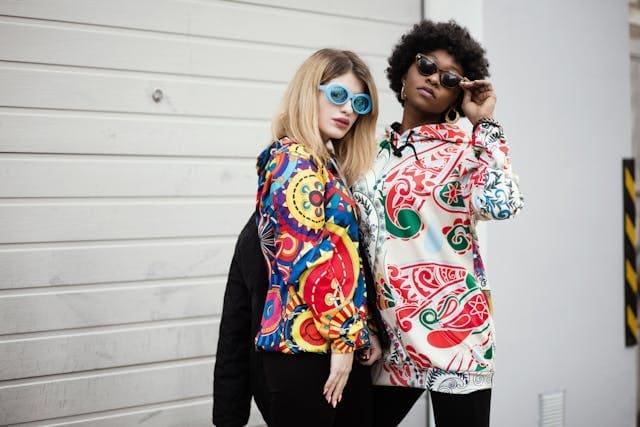Wearing your shirt has emerged as a trend and a unique way to express oneself, advertise, and create new brands. This trend continues to grow, and with it, there is a demand for efficient printing techniques that can give designs life in terms of colors and the ability to last on the garment. Regarding custom t-shirt printing, the two most conventional techniques are direct-to-government printing and screen printing.
This paper has discussed the two methods, and one needs to understand the distinctions to make the right decision for your custom apparel. This article will explain the differences between dtg vs screen printing to guide you to the best stylish and customized t-shirt method.
The Basics of DTG Printing
DTG is another new technology in the custom apparel market that has recently gained popularity. This printing technique incorporates a unique inkjet printer to print water-soluble ink on the t-shirt material. It enables a wide range of colors and fine details of higher and mostly sharp quality on the final prints. Another benefit that makes DTG printing unique is its capacity to print designs with high detail and produce photo quality printing on t-shirts, which is suitable for complex designs and multiple colors on t-shirts.
It is also characterized by the short time required to set up a printer, especially when printing small quantities of DTG products. One of the most significant benefits of using this method is the fact that there are no screens to prepare, as in the case of screen printing, meaning that there is little to no time wasted in setting up the equipment when a single or a small number of products are being printed on. This makes DTG even more appealing to those who want to order unique t-shirts for themselves, their company, or those who want to make t-shirts for the short run.
However, as much as DTG printing is a great innovation, it also has drawbacks. This method produces water-based inks, which are most effective when used with 100% cotton materials because the inks may not penetrate synthetics well. Furthermore, DTG prints are usually more long-lasting than other printing methods, but such prints are less resistant to washing and abrasive use than screen-placed images.
The Essentials of Screen Printing
Silk screen printing, or screen printing as it is commonly referred to, is one of the oldest custom apparel printing techniques, dating back to the late 19th century. This entails using stencils or screens for every color involved in working on the design and then printing layers of ink on to the fabric. The ink is forced through the screen, creating a thick layer on the t-shirt, making a clear and vibrant imprint.
One of the key benefits of screen printing is its durability. Using this procedure, the layers of ink applied are relatively dense and thus do not fade, crack, or peel with continued washing. This makes screen printing ideal for t-shirts that must be worn in activities that may cause the fabric to fade or get ruined, such as sports team wear or even promotional wear.
Screen printing is also economical for large production runs since it requires minimal material to produce a perfect print. Although the initial cost is relatively high, as screens for each color must be made, the price per unit is meager, especially if large quantities are required. Also, screen printing is flexible in the type of fabrics that can be printed; one may use cotton, polyester, or a blend of the two, making it better than DTG printing.
Screen printing does have its disadvantages, nevertheless. However, setup costs can be high in addition to the time required, especially when working with designs that incorporate multiple colors. This makes it less appropriate to be used for small quantities or designs that are subject to change often. Secondly, screen printing cannot incorporate fine details or photorealism, as each hue has to be printed independently, and excessive detail can be easily blurred.
Choosing the Right Method for Your Custom T-Shirts
When deciding whether to go for DTG or screen printing for your custom t-shirts, consider the following: the level of embellishment on the t-shirts, the number of t-shirts required to be produced, the fabric type, and the use of the apparel.
If you are producing a fine-line design or if your design needs multiple varieties of colors, then DTG is the best option for you. Direct printing on fabrics, not screens, provides better definition and detail, which is perfect for more complex graphics and multi-color. Also, DTG printing is flexible with the amount of orders, which also saves a lot of costs for small runs or a single-piece top-notch design.
On the other hand, if the aim is to have the product long-lasting and inexpensive, specifically for large batches of prints, then screen printing is your best bet. Since screen-printing produces designs that are quite resilient, the products will always wear on for several uses before they are washed away, making them ideal for use in uniforms, promotions, or any t-shirts that are expected to be worn frequently. Likewise, the price per unit tends to reduce as the quantities we need for screen printing increase, making it cheaper for larger orders.
Conclusion
DTG and screen printing are both effective methods of printing on t-shirts, but they have strengths and weaknesses, which make it possible for one to be preferred over the other depending on the need that the t-shirts are being printed to meet. DTG printing is particularly useful in creating fine, detailed prints and multiple colors, making it suitable for small-batch orders. Meanwhile, screen printing provides more durability and affordability for bulk production, so it is a go-to option for long-lasting and potent print jobs.
The New Jersey Digest is a new jersey magazine that has chronicled daily life in the Garden State for over 10 years.
- Staffhttps://thedigestonline.com/author/thedigeststaff/
- Staffhttps://thedigestonline.com/author/thedigeststaff/
- Staffhttps://thedigestonline.com/author/thedigeststaff/
- Staffhttps://thedigestonline.com/author/thedigeststaff/


